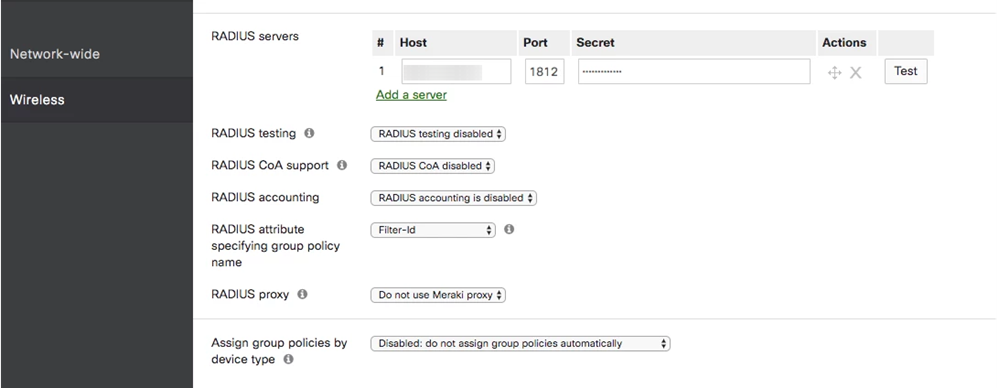

- MERAKI VPN CLIENT CONFIGURATION WITH RADIUS INSTALL
- MERAKI VPN CLIENT CONFIGURATION WITH RADIUS FULL
- MERAKI VPN CLIENT CONFIGURATION WITH RADIUS WINDOWS
A managed device browsing the public Internet, such as researching product information.An unmanaged device accessing business critical SaaS applications.This design guide addresses the following business flows for a SASE network: This enables the selection of very specific capabilities necessary to secure them. Cisco SAFE uses the concept of business flows to simplify the analysis and identification of threats, risks, and policy requirements for effective security. In the Cisco SASE Architecture guide, the concept of SAFE business flows was introduced.
MERAKI VPN CLIENT CONFIGURATION WITH RADIUS FULL

The SASE architecture has three core components: Each requires secure access to applications and must now be treated as a ‘branch of one’. IT needs to protect users and devices as if they were located at a corporate office or branch. The need for cloud-delivered security service expands daily as contractors, partners, IoT devices and more each require network access. It is now common practice to provide remote employees with direct access to cloud applications such as Office 365 and Salesforce with additional security. Today’s workforce expects seamless access to applications wherever they are, on any device. No smartphones or internet of things devices were used in the creation of this guide
MERAKI VPN CLIENT CONFIGURATION WITH RADIUS INSTALL

Below is a copy of our logs once we had this set-up properly. This is very useful as it shows the communication between the two devices and can help pinpoint where the issue lies. Both the Meraki Security Appliance and the Azure MFA server have the capability to configure syslogs. Azure recommends this being at least 60 seconds. To extend this you will have to open a support case via the Meraki dashboard and ask to have it extended. For there to be enough time for the authentication to complete this must be extended. By default, the Client VPN timeout on the Meraki Security Appliances is 15 seconds.Below are some useful tips from our experience with setting this up. Unfortunately, the set-up and configuration of Azure MFA with Meraki Security Appliance is not well documented.
MERAKI VPN CLIENT CONFIGURATION WITH RADIUS WINDOWS
The Azure MFA Server is installed on a Windows 2012 Server acting as a Domain Controller. We chose to use Windows Azure Multi-Factor Authentication (Azure MFA) Server.

These third-party solutions can be found on Meraki’s website below. However, there are third-party solutions that can be used to provide multi-factor authentication for client VPN. While Meraki does have multi-factor authentication to log into the cloud controller, we were disappointed to find out that they do not have multi-factor authentication for client VPN. We recently replaced our existing router with a Meraki MX65w Security Appliance.


 0 kommentar(er)
0 kommentar(er)
